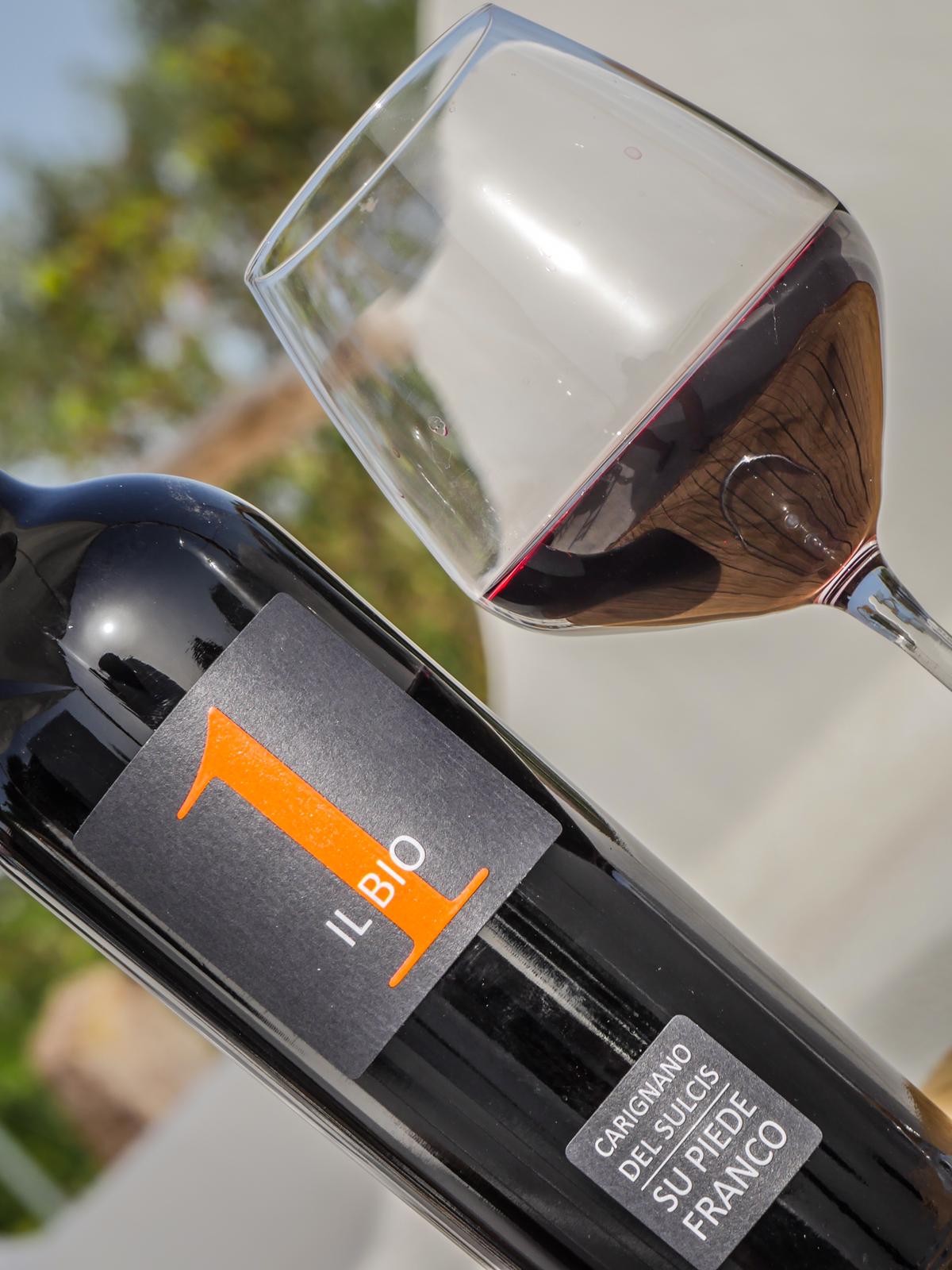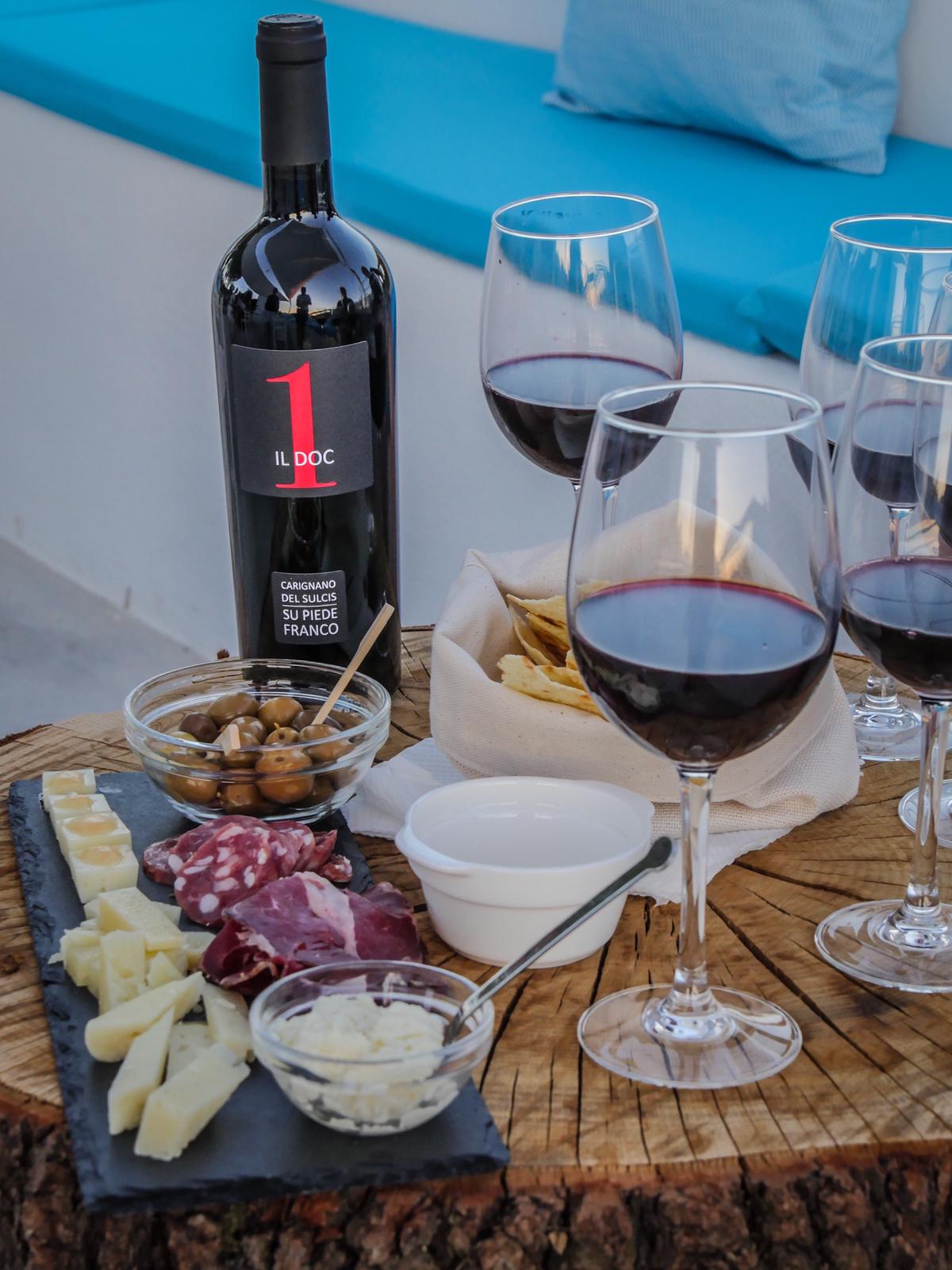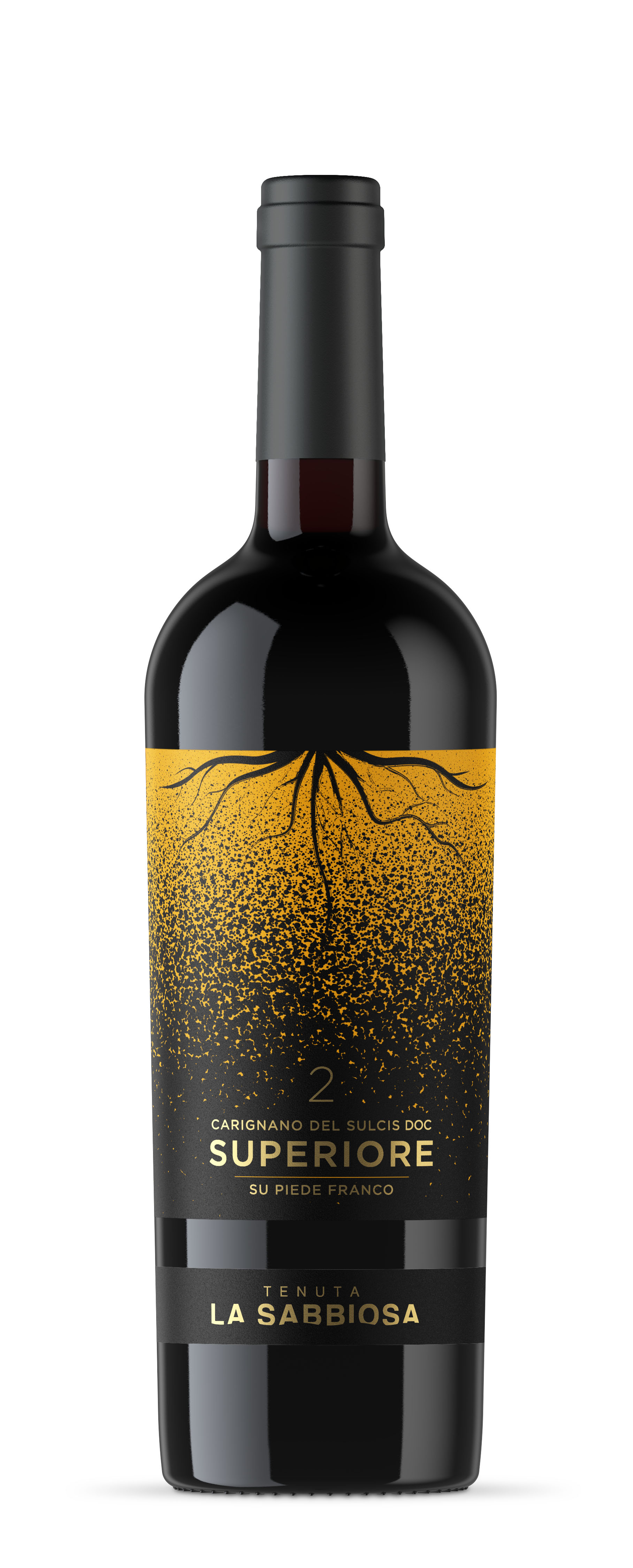- About us
- Company details
The cellar on the dunes of the sea
"Only if you are a little crazy can you recover centuries-old vineyards, fight against the mistral wind and sandy soils, to obtain a modern wine from an ancient tradition".
Tenuta La Sabbiosa stands in front of the Sardinian sea, in the dunes of the Island of Sant’Antioco. "An island of the island" which until the 1980s was covered with tiny Carignano vineyards. Small particles of sapling vines, bred "like gardens" to the beaches, between the dunes and junipers, on sandy soils whipped all year round by strong and saline mistral winds.
Screws have always been on the loose because this is one of the few areas in Europe where the terrible plague of phylloxera has not taken root, destroying the secular work of man.
However, a tradition that has largely disappeared since the late 1980s, when low production yields began to clash with market logic. Thousands of monumental vines unique in the world, with one hundred and more years of age, have been eradicated. Since the dawn of time, in fact, the vineyards here are worked and regenerated with ancient techniques that allow to keep the plants alive for centuries.
Here and there, however, thanks to the passion and tenacity of the elderly, small plots of vines have survived and from one of these the production of the "Tenuta La Sabbiosa" wines started. Over the years, other centuries-old vineyards have been saved from extinction and added to the property that is constantly growing.
The winemaking intent of the company has always been to return to the essence of Carignano: "an exceptional wine because the plant from which it derives has suffered from thirst, heat, wind and perhaps even a little hunger" said G Tachis "a wine with low acidity and a very high pH, rich in sweet, round, gentle noble tannins that ages slowly and sweetly, as well as great sages."
This is why Tenuta la Sabbiosa, despite the yields being inevitably among the lowest in the world, has started working on the area's centuries-old vineyards again, to obtain wines with aromas and flavors that can be given with traditional techniques and the best of modern knowledge. only from barefoot vineyards that grow near the sea, on soils composed of 99% sand. Lands that starve plants already thirsty by the Sardinian sun and slapped by the mistral: the plant that has always suffered slightly from a better wine.
"Only in a few places in the world, such as at the Sabbiosa, have the vines been saved with their original" footprint "roots that allow you to taste the pure and ancient flavor of European grapes."
In the field it is treated as it used to be with sulfur and copper, it is fertilized with manure, field bean, weed the weeds manually and the modern and sustainable practices of organic agriculture are used.
The harvest, strictly manual, takes place towards the end of September when the grapes reach perfect ripeness. A careful selection of the fruits is carried out, which collected in small boxes, are brought to the cellar.
In the cellar it took years of tests and experiments to obtain the desired wine. Processing and stabilization have been reduced to a minimum in order to obtain a wine that is the son of the earth and not oenological techniques which, however, remain precious allies for producing high quality wines.
The oenological management of the company is entrusted to Antonio Manca with the advice of Beppe Caviola.
Love for the land
The deep passion and respect for nature inspire and condition all the company's activities which stands out for the very high level of sustainability of agricultural activities, the use of only electricity from renewable sources, packaging with the lowest environmental impact possible, the furniture for recovery and recycling.
And nature always inspires labels: numbered according to the birth of the wines, they follow the mathematical series of Fibonacci as happens in many natural forms, especially in botany.
Year of establishment:
2012
Number of employees:
FROM 3 TO 9 EMPLOYEES
Annual turnover:
Under 250.000 Euro
Reference year of turnover:
2018
Export turnover:
0
Activities:
Growing of vegetables and melons, roots and tubers
Growing of grapes
Growing of pome fruits and stone fruits
Growing of spices, aromatic, drug and pharmaceutical crops
Manufacture of wine of fresh grapes, other than sparkling wine and other special wines
Manufacture of sparkling wine and other special wines
Restaurant activities on the premises on farms
- Videos
- Catalogue
HEROIC VITICULTURE STRESSED BY THE WIND AND THE SEA MAKES OUR GRAPES AND OUR WINES UNIQUE IN THE WORLD
No documents uploaded
- Contact Information
- Business Proposals
Company:
BIOMAR COOPERATIVA AGRICOLA
Address:
LOC CUSSORGIA SN
City:
CALASETTA (SU)
Zip Code:
09011
E-commerce:
Social media:
Tag:
No business proposals uploaded
- Map
1 IL BIO

Harvest and year description: mid-September, a week in advance compared to the usual. 2017 was a year of great drought in Sardinia and particularly in the south of the island, in which the heat was high throughout the summer and it did not rain for months. However, thanks to the sea proximity of our vineyards, evening and night temperatures have been mitigated and have allowed a healthy maturation of the grapes that have provided
wine with strong balsamic notes that characterize a great vintage. Winemaking: Careful selection of the grapes, harvested by hand.
Fermentation in steel tanks at controlled temperatures 25-28°C. Repeated repassing and delestage ensure a good extraction of the aromatic and coloring components. Refining: Steel Production in bottles: 4000
Web site
https://tenutalasabbiosa.com
1 IL DOC

Harvest and year description: mid-September, a week in advance compared to the usual. 2017 was a year of great drought in Sardinia and particularly in the south of the island, in which the heat was high throughout the summer and it did not rain for months. However, thanks to the proximity of the sea of our vineyards, evening and night temperatures have been mitigated and have allowed a healthy maturation of the grapes that have provided wine with strong balsamic notes that characterize a great vintage. Winemaking: Careful selection of the grapes, harvested by hand. Fermentation in steel tanks at controlled temperatures 26-28° C. Repeated repassing and delestage ensure a good extraction of the aromatic and coloring components. Refining: Steel Production in bottles: 8000
Web site
https://tenutalasabbiosa.com
2 IL SUPERIORE

Terroir
Vineyard location: Calasetta, Isola Sant’Antioco - Sardinia Soil: Sandy Vineyard cultivation: Alberello Age of vines: 90- 100 years Yield per vine: 0.8kg / 1kg Yield per hectare: 25/30 quintals / ha,
2 plants = 1 bottle
The Superiore is the son of the sands of the Calasetta dunes, where monumental vines unique in the world have lasted for a hundred years and more, with roots on the sand on sea sand, surrounded by myrtles, mastic trees and junipers.
Since the dawn of time, on this smaller island, the small vineyards have been worked and regenerated with ancient techniques that have been handed down from father to son and that allow, with the propagation of sapling-grown vines, to keep the plants alive for centuries. It is impossible to establish the age of the plants from which the Superior grapes are harvested, certainly 90 years, perhaps centuries ...
Secular plants that incredibly manage to survive on soils that define sandy is an understatement: the percentage of sand reaches 99%. Sand is a soil that starves and thirsts the vines, the yield is inevitably very low, but it saved them from the terrible plague of phylloxera.
By tasting the Superiore, you can immediately perceive the natural and light flavor of the sea which is a few hundred meters away. Sea that also regulates excessive heat and stabilizes the climate by lowering the temperatures in the vineyards "in collaboration" with its greatest ally: the mistral that blows powerful and constant all year round. Without their "air conditioning" there would not be the slow and perfect ripening of the grapes that give life to the Superiore.
Radiated all year round by the Sardinian sun, the Carignano plants from which the Superiore is obtained, suffer thirst and heat, are whipped by strong and salty mistral winds, suffer hunger on sandy soils: here are the ingredients to make a great wine or as G. Tachis said "An exceptional wine".
The Superior
To obtain the Superior, the fruits of at least 2 plants are needed since a careful selection of the best plants and bunches is carried out in the field. They are then transported to the cellar, in small shaded boxes to protect them from the sun and before proceeding with the vinification a selection of the best grapes is carried out.
The oenological management of the company is entrusted to Antonio Manca with the advice of Beppe Caviola.
harvest
The harvest began in mid-September, one week earlier than usual. 2017 was a year of great drought in Sardinia and in particular in the south of the island, where the heat has been high throughout the summer and has not rained for months. However, thanks to the proximity of the sea, the evening and night temperatures have been mitigated and have allowed a healthy ripening of the grapes which have given a wine with strong balsamic notes that characterize a great vintage.
winemaking
Destemming of the bunches, leaving the whole and intact grape.
Fermentation in steel tanks at a controlled temperature of 27-28 ° C with the addition of about 20% of non-destemmed whole bunch grapes, 3-5% of pied de cuve with indigenous yeasts (prepared 1 week before from the same plants).
Maceration of 15/20 days with careful use of the reassembly and delestagè technique.
Refinement in French wood tonneau, 2nd passage fine grain, for 17/8 months, aging for another 6 months in steel barrels and final refinement in the bottle for at least 6 months.
Web site
https://tenutalasabbiosa.com


